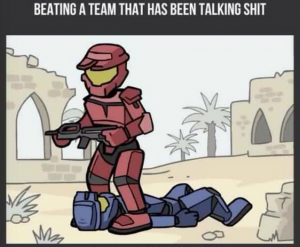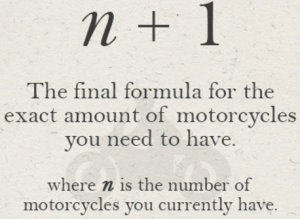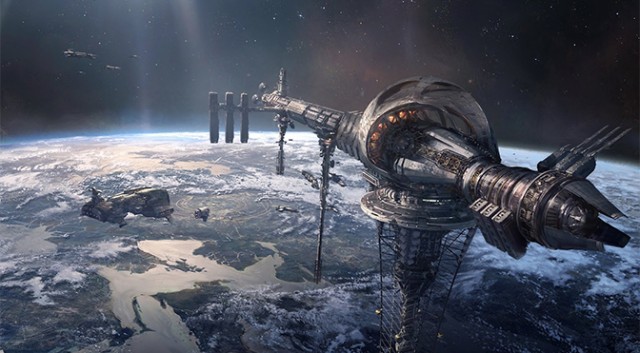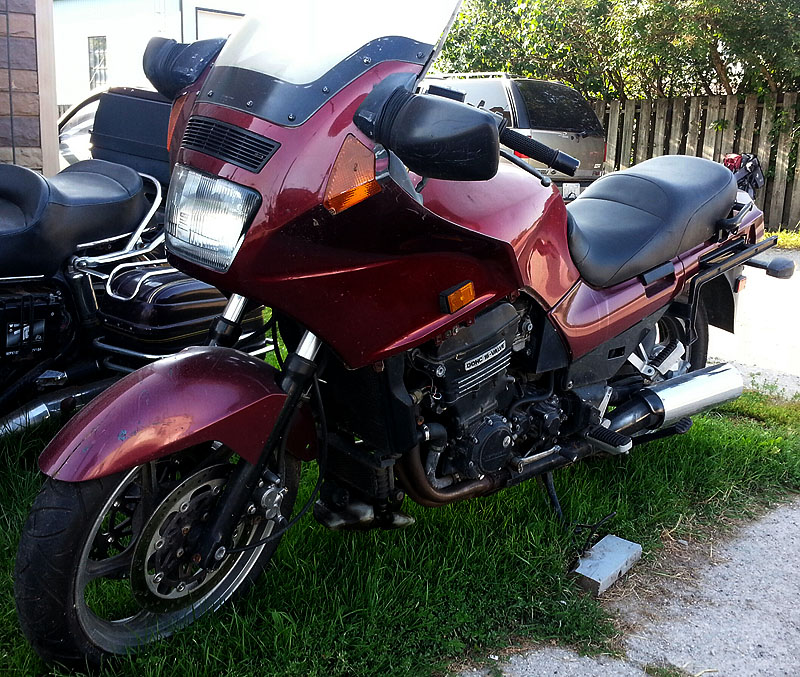The other week we had a PD on differentiated instruction. Before this long, undifferentiated lecture, I tried to get netbooks into as many interested teacher’s hands as possible. We set up a Google doc, opened up Twitter and began back channeling. It went well, most of the teachers trying it had never back channeled before. In a one way lecture with virtually no two way communication between the audience and the lecturer, we had ourselves a bracing and critical discussion about the material being covered.
Raging: how empowered learners respond to being outside the Zone
Getting a student into the zone of proximal development is a tricky business. If students don’t have sufficient background knowledge and skill in what they’re learning, they tend to switch off. This often shows as distraction, disengagement and disinterest. In extreme cases students become disruptive, knocking others who might be on the cusp of their ZPD out of a learning opportunity. This seems to be happening more often in classrooms, I have an idea why…
That disruptive approach is common in online gaming. It might be useful to look at how raging, trolling and ‘Umad‘ online interaction points to a foreign set of values that many students are familiar and comfortable with. The vast majority of educators have no experience or knowledge of gaming culture. When a student in the class room acts on values they’ve learned while gaming, shock ensues.

In a player versus player game, game balance and the opportunity for everyone to participate in a maximal way (in their ZPD) depends on the players all having sufficient skill to make a game of it. In a randomly generated game, it’s common for a team of n00bs to get pwned by a more skilled team. This is often accompanied by flaming with the intent to anger your opponents to such a degree that they quit (ideally vocally angry, allowing you to throw in a umad? before they storm off). In gaming, ‘schooling‘ your opponents is a vital part of the learning process. It’s the clearest way to state your superiority in skill over an opponent. The goal is to make it so clear to a weaker player that they are out of their league (way outside their ZPD) that they give up in anger. This is going to sound very foreign to the overly compassionate, no-bullying, we’re all to be treated as equals approach found in education, but this is where many students spend hours of their time when not in the manufactured environment of their school.
A gamer who is forced out of a game in this fashion is very angry in the moment, and quits the game, usually to pick up another game immediately. In this game, if they are within their ZPD in terms of their gaming skills (which involves knowledge of the game environment, hand eye coordination, strategy and cooperative play, among others), they are immediately re-engaged. Their recent failure does not hurt them or follow them in any way, and the adrenaline burst of anger has prompted them to intensively refocus on the game. I suspect the stats for a player in a post-rage situation improve due to the residual anger and energy released. They increase their skill with this hyper focus and rage less often.
When you meet a master player, they tend to shy away from the trash talk and simply demonstrate their skill, rather than yapping about it. This kind of mastery is every player’s goal. When they get there, they often adopt the degree of awesomeness Jane McGonigal talks about in her TEDtalk. As nice as it is to see someone recognizing gaming awesomeness, it’s also important to recognize that gaming intensity requires accessing a full range of emotional response in players. These responses can often seem cruel or unusual to non-gamers.
Gaming’s all-in philosophy is completely counter to the risk-averse, failure-follows you approach of education. Rather than being allow to epically fail, suffer and re-engage, education does everything it can to ensure that epic failures (or failures of any kind) never occur. Failure is increasingly impossible to achieve in the class room, and the result moves students further and further away from the culture of one of their richest learning environments.
If you want intense engagement then you need to offer access to a full spectrum of emotion, and a real and meaningful opportunity for failure, but you can’t be an ass about it and hang that failure around a learner’s neck forever. Until we grasp this simple truth found in the forge of intense gaming, we’re going to appear increasingly foreign to our students, and they are going to keep learning more from World of Warcraft than they ever will from a teacher.
http://www.pbs.org/kcts/videogamerevolution/impact/myths.html (lies debunked about gaming)
http://janemcgonigal.com/: a great look at the positive power gaming can produce (I’m arguing here about how it’s negative aspects still offer useful truths too)
http://www.wired.com/wired/archive/14.04/genX.html: an interesting summary of the gamer generation
http://www.avantgame.com/: recognizing the power of gaming
Ninja in my Garage
The Ninja finally crept into my garage last night. She’s crouching there quietly as freezing rain falls all about, waiting for that first chance to ease out onto the open road and put some wind behind us.
She’s under used and poorly looked after. Someone took her pretty electric blue and painted it an angry, flat black… now flaking. As we get to know each other I’m going to see what she needs to feel better about herself; a paint job is in her future.
In the meantime, as the freezing rain falls outside I’m going to take off her fairings, clean her up and make sure everything is squeak free, topped up and ready to go. A bit of time to become familiar with the bike isn’t a bad thing. I was wandering around Canadian Tire the other day and saw a little, electric air compressor and started dreaming about a garage that’ll do it all for me. A little compressor, a lift to get the bike off its feet for work, and a shopping list of synthetic super fluids.
I was wandering around Canadian Tire the other day and saw a little, electric air compressor and started dreaming about a garage that’ll do it all for me. A little compressor, a lift to get the bike off its feet for work, and a shopping list of synthetic super fluids.
I’ll be figuring out how to get into all the maintenance and starting to look the body work and what I can do to make my Ninja pretty again.
Connie
 |
| cob-webs and rust… |
The Kawasaki Concours was a rough looking old thing, but very mechanically sound. It only has 56k on it and was tight, dry and sounded strong. The owner was a long time rider who is being sidelined by arthritis, he knows how to look after a bike. Mechanically this Connie is well cared for, it’s just a cosmetic mess. I’m good at cosmetic messes. I offered him $800 and he says OK. Hopefully I’ll have it home next time I post.
I’m going to be spending some time stripping this old girl down and cleaning her up.
In the meantime I think I’m going to take a friend’s advice, get both bikes! My current plan is to transition to the Connie from the Ninja at the end of this season, sell the Ninja and go looking for that Interceptor of my dreams. Since the Ninja was a much newer bike, I think I’ll be able to diversify my two wheel portfolio without putting any more money into it.
A Cure for Double Doubling
The following is relevant to what’s happening in my board, but since there appears to be no central plan from a ‘ministry’ of education, every board is doing their own thing, so this might not apply to you. In my world the double-double is now an overwhelming truth that combines all the difficulties of remote learning with the challenges of providing face to face instruction in a medical emergency simultaneously all day every day. I have two classes like that so I’m prepping for two different lessons and instructing in two places at once (online and f2f) all day every day every week, no breaks.
I have some ideas on how to fix that:
I’m able to cover the basic hands on and theory learning in my face to face technology classes, but the more pedagogically complex work like developing an adaptive and agile engineering process by working out how to solve problems in non-linear, failure heavy learning situations simply isn’t happening in our drink-from-the-firehose quadmestered schedule. There is no time or the space you need in order to iterate past problems and internalize this deeper learning, and there is no time as a teacher to generate this prodigious amount of material. How could we make moves to fix that?
TIMETABLING SUGGESTION #1: NO MORE QUADMESTERS! A good old fashioned semester with one class each week has its own problems (like 3 weeks between each subject), but would also mean no more double/doubling because we’d never have an always on quadmester.
A weekend break between crossovers between subjects along with our current cleaning regimens (which seem to do a better job at stopping COVID19 than the general public) suggest that we could return to a semestered system safely. Rather than waiting months to take a breath, teachers would have a rotating prep each month where they could plan for the next onslaught. Senior students would have a breath too if they have a spare.
Double cohorts of simultaneous face to face and remote students mean teachers are producing learning content at high speed (a week of intensive class equals almost a month of regular class) while also having to produce online and face to face lessons. The marking obviously comes at an accelerated rate too. This is absurd. I wish we had a union. Breaking up the quadmester system back into semesters means everyone would cycle through all their classes every four weeks, and while there will be retention problems, there are anyway. At the very least getting semesters back would mean that students with spares would get to experience them and teachers would actually be given time to prep what they’re teaching. It also means that we’re not dragging kids through rapid fire quadmesters and they would have time to digest what’s coming at them. Best of all it means we’d never have to use the term ‘quadmester’ again.
***
The remote part is happening simultaneously and I’m supposed to be designing and running that too… while I’m teaching f2f at the same time. Parents are wondering why I’m not responding to questions online in a timely fashion while I’m teaching the other cohort in the classroom. In the meantime I’ve given a ‘remote learning support teacher’ to help me with that, except they’ve yet to be able to provide anyone who has the faintest clue what we’re doing in computer engineering.
I’m seeing make-work for teachers instead of them focusing on teaching, let’s stop that.
TIMETABLING SUGGESTION #2: CAP ALL SPECIALTY CLASSES THAT YOU CAN’T FIND A QUALIFIED TEACHER TO REMOTELY SUPPORT AT 20 AND MAKE THEM SINGLE COHORT CLASSES.
Rather than inventing make-work that has people making teacher salaries to babysit students online (no marking or any other responsibilities), let’s let subject specialists remotely support their own classes.
The myth is that we’re providing 2.5 hours of face to face instruction and 2.5 hours of remote instruction each day adding up to enough instructional time to equal a credit, but if we can’t provide a qualified, knowledgeable teacher to manage the learning then we’re not providing the instruction time the Ministry of Education claims is required to earn a credit. A split f2f/remote cohorted system does good things in reducing face to face class sizes (though when students are coming off buses with 38+ students on them you have to wonder how effective it is), but f2f/remote quadmesters are a shell game when it comes to actual instructional time.
I’ve got 15-20% of my grade 9s (the ones with IEPs who need support – but that’s been cancelled in school) not doing any remote learning at all. Since the remote learning support teachers aren’t qualified to speak to the material and don’t have any clearly defined responsibilities anyway, these kids are falling through the cracks. This academically driven rapid-fire quadmestered system is predicated on privilege and aimed at student success for the successful. Kids who struggle in the system are being run over by it (as usual).
We’ve been given ‘remote support teachers’ who are supposed to oversee the elearning half, but they’ve yet to provide me with one who is qualified in my subject area and both have said that they have no idea what we’re doing in class. I’m unable to put them as teachers in the Cisco Netacademy LMS because they aren’t qualified to teach it, which is kinda the point. Guess who gets all the content question emails? Except I’m kinda face to face all day too.
This could be fixed at next to no cost. Tech classes have smaller caps anyway, so setting them to the cohort limit (or changing the cohort limit to tech caps) wouldn’t change class sizes or displace students at all while ensuring that qualified teachers are teaching specialist subjects. Tech numbers have remained strong because they are hands-on classes that don’t translate to a remote learning platform well. In the spring we were told students can’t do any tech work at home even if they had the tools at home for liability reasons, so there is another reason to protect this specialized learning in face to face situations. Any class that focuses on tactile hands on learning should be prioritized in face to face classes. Those classes (tech, art, etc) shouldn’t be lumped in with academic classes that work online.
We’re frequently told this situation is flexing, but there doesn’t seem to be a lot of flexibility in planning once it’s in place. I only hope the people responsible for arranging the deck chairs on our ship aren’t nailing them into place, because they’re placed poorly.
***
I’m watching my grade 9s struggling to wrap up this overwhelming rapid fire quadmester now. I’m crawling to the end of the damned thing wondering how things have gone so wrong. In the first couple of weeks I didn’t know how I’d get to the end. It turns out the answer is: do less less well, which I’m not satisfied with. I’m not sure that the people running things who haven’t been in a classroom in the 21st Century are as frustrated by that as I am though.
The nines struggle to adapt to a semestered system when they end in January in normal scheduling. In this pandemic scheduled school year they are getting buried even while being overwhelmed emotionally by the limitations inflicted upon us by this virus. There was a lot of talk about mental health and care before we launched this waterboarding schedule. It’d be nice if that focus returned when people were thinking about how the second semester might go down in February.
If not a weekly/semestered schedule, how about a four day week with one day as a fully remote working day where teachers who are teaching their students rather than babysitting them could interact meaningfully with them in that online environment in real time (hard to do when face to face at the same time)? Doing that instead of inventing make-work ‘remote support teachers’ would be a much more functional use of time. If prep times were integrated into that remote learning day we’d also be able to cut the dozens of ‘teachers’ who are covering (or not if they aren’t qualified) teachers in order to provide them with prep time. I haven’t had any prep time since this quadmester started because they’ve yet to be able to provide me with a tech qualified teacher to cover my class, and I’m not going to pull my students out of hands-on work even if I desperately need the prep time because the whole point of face to face classes it to restore tactile hands-on learning that was lost in remote teaching in the spring.
We could even vary classes based on what they are instead of lock-stepping everyone through the same always on quad-mestered system, but locking all classes to academically focused approaches is the education system’s knee jerk response to everything. Wouldn’t it be something if this pandemic emergency actually produced better pedagogy through creative and differentiated scheduling rather than overwhelming everyone with the same, simplistic and unsustainable quadmestered plan?
from Blogger https://ift.tt/3jHxcsY
via IFTTT
Perth County Moto
Last weekend I was in Stratford to see Mother’s Daughters – a modern feminist take on Mary and Elizabeth’s battle to become queen after their father (Henry VIII) kicked the bucket way back in 1550s England – it was brilliant!
Before the play we were about town having dinner when I stumbled upon Perth County Moto. Jeff O’Neill, the co-owner, was in there and we had a nice chat about vintage German police leathers and my Triumph Tiger.
Looking over PCM’s website, Jeff and his wife Lindsay seem to be focused on a side of motorcycling that you don’t often see: vintage and DIY. Everything motorcycle related near me is pretty much a box store or dealer (which is like a box store but with higher prices). Looking into PCM’s approach makes me wish I lived closer to Stratford. The Englander in me finds himself a stranger in a strange land when it comes to DIY; it’s not generally a North American mindset.
 There is a younger side to motorcycling culture that embraces DIY and gets excited about customizing older machines. Some turn their noses up at this new approach and call it hipster, but I dig it. Perth County Moto seems to be all in on the custom DIY scene. They even have a custom build going on on their blog and look like they support spannering nights.
There is a younger side to motorcycling culture that embraces DIY and gets excited about customizing older machines. Some turn their noses up at this new approach and call it hipster, but I dig it. Perth County Moto seems to be all in on the custom DIY scene. They even have a custom build going on on their blog and look like they support spannering nights.
 PCM has a variety of Biltwell new gear, Bell Helmets and some other less common manufacturers for sale. I tried on Biltwell gloves but wasn’t thrilled with the feel, but they’re a pretty budget item and I’m getting pickier with gloves (Speed & Strength aren’t cheap, but that’s the new standard). I wish I’d had more time to look around, but I was on a dinner and show schedule.
PCM has a variety of Biltwell new gear, Bell Helmets and some other less common manufacturers for sale. I tried on Biltwell gloves but wasn’t thrilled with the feel, but they’re a pretty budget item and I’m getting pickier with gloves (Speed & Strength aren’t cheap, but that’s the new standard). I wish I’d had more time to look around, but I was on a dinner and show schedule.
One thing that did stand out was the used leathers on a rack at the back. The green German Police leathers immediately jumped out at me, but alas, they were designed for a very small German police officer.
If you’re looking for out of the ordinary gear, Perth County Moto is worth a stop. In my brief time in there I managed to find a nice Triumph patch (they have a big selection of classic badges along with a pile of sticker options). I’m sure I’d have bought something else had I the time. Fortunately, we’re back in Stratford for shows several more times this summer.
How best to get out to Perth County Moto? Well, load up for a lovely ride through Southern Ontario countryside, get into Stratford early and have a look around PCM, then go out for dinner at one of the many nice pubs or eateries within walking distance. Once you park up downtown, it’s all easily walkable. I’d also suggest having a look at the Black Swan Brewery (they make a wonderful English Pale Ale) before you catch a show and then ride back home under the Milky Way while working in some funky new gear. Perth County Moto gives any motorcyclist a reason to ride out to Stratford this summer.
from Blogger http://bit.ly/2WDkAfO
via IFTTT
One More Bike Is Never Enough
 My cousin-in-law posted this on Facebook. Funny how the proliferation of bikes is a common theme. Few people are happy with just one, probably because one bike can’t do it all and if you love to ride you probably want to ride in as many different circumstances as possible.
My cousin-in-law posted this on Facebook. Funny how the proliferation of bikes is a common theme. Few people are happy with just one, probably because one bike can’t do it all and if you love to ride you probably want to ride in as many different circumstances as possible.
I’ve posted several times on bikes that have caught my eye and after realizing that there is math to support this I’m going to do it again!
Based on the bikes I’ve sat on at various shows over the winter these are the ones that felt special or stood out for me. Given a chance I’d love to test ride them.
A big, naked Kawasaki Z1000
I wanted to love the Triumph Street Triple, or the Suzuki Gladius, but they felt on the small side. I was also keen to try the Yamaha FZ-09, and while it fit ok it didn’t offer much in the way of an emotional charge.
As far as naked bikes go there was only one that felt special, and that was the Kawasaki Z1000. The big, newly re-engineered Kawasaki has a kind of bonkers ode-to-Japanese-anime look that really gets to me. That it also fit me nicely and offered an astounding openness (the dash all but disappears into the fairing), made it a love at first sight experience. I’m still a few years away from a litre bike, but when I’m ready, this one is on the short list.
A need for speed
 I went to shows this winter thinking I’m all about the adventure bike, but they aren’t what got me going. Sure, sitting on the big Ewan McGregor adventure BMW felt grand, but it didn’t really get me excited. I’ve always been a sports car goof, I guess I’m the same way about bikes.
I went to shows this winter thinking I’m all about the adventure bike, but they aren’t what got me going. Sure, sitting on the big Ewan McGregor adventure BMW felt grand, but it didn’t really get me excited. I’ve always been a sports car goof, I guess I’m the same way about bikes.
 What surprised me was sitting on the Suzuki Hayabusa. This was another big bike that felt like it was proportioned right for me (6’3″ 230lbs). The mystical reputation of this speed machine as well as its visual presence surprised me. It isn’t a rational response (the BMW was much more sensible, which is saying something), but sitting on the ‘Busa felt special.
What surprised me was sitting on the Suzuki Hayabusa. This was another big bike that felt like it was proportioned right for me (6’3″ 230lbs). The mystical reputation of this speed machine as well as its visual presence surprised me. It isn’t a rational response (the BMW was much more sensible, which is saying something), but sitting on the ‘Busa felt special.
That sport bike appeal rocked me again when I sat on the Kawasaki ZX-14R. With Testarosa strakes over the air intakes and the way you fall into the bike, it quickened my pulse. Once again, not a rational decision, but the emotion couldn’t be denied.
I still want to expand my riding repertoire beyond sports bikes, but as the weather starts to warm up and the Ninja looks at me from the garage, I find myself not wanting to give it up for some blatting adventure bike that feels like it’s on stilts. I intend to find my way to a day or two of off-road training because it’s a good way to better understand the physics of riding, but that feels like a rational choice, what I want to do is get some track time in.
In the future I may have a couple of three bikes in the garage. I hope I’ll love each one in a different way, but it looks like the sport bike may have a special place in my heart. I guess I’m going to have to come to terms with being a big guy with a sports bike addiction.
Icelandic Motorcycle Culture
I’m sitting in England thinking about our 9 days in Iceland. We covered over two thousand kilometres in the land of fire and ice, alas, none of it on two wheels, but I was always on the lookout for motorcycle culture and there is no shortage of it on Iceland. In a future post I’m going to hammer out all the advice I’ve garnered from our Icelandic reconnaissance.
You see a lot of BMW GSes on Iceland. Viking Biking rents them out of Reykjavik and a ferry delivers them from mainland Europe on the east coast. The adventure bike is the perfect motorcycle genre for Iceland as the roads vary from smooth tarmac to potholed hard dirt, and everything in between.
On our second day I discovered another side of Icelandic motorcycling culture. The big-twin cruiser rider can also be found here, albeit in much reduced numbers. The Norse Riders Iceland Chapter are a mashup of your North American patch club with viking imagery. Like every other biker I’ve talked to, they look rough but are the nicest people when you chat with them.
Later that day we were making tracks back to Keflavik Airport to return the rental car when we came across some massive lava fields in the south west of the island. We’d been driving 20 minutes at a time without seeing traffic either way, and this was during the height of tourist season when a number of people had asked me if we should be going there then. If you like empty roads, you’ll love Iceland. Through the lava fields eventually came two GSes making time on the empty, winding roads. I can only imagine the smiles on those riders’ faces.
Even in the capital of Reykjavik you’re looking at something the size of a small North American town. Traffic moves all the time and there are seldom any backups. Out in the country you’re making tracks all the time with sporadic traffic at worst.
You’re driving on the right, so you’ve got none of the headaches involved in riding in the UK or Australia/NZ, and the drivers themselves are polite and efficient. If you pull up behind a slower moving vehicle they’ll turn on their right indicator when it’s safe for you to pass. We made good time in a hatchback and then a mini-van with six people and luggage; on a bike it’d be heaven.
This left me wondering what I’d most enjoy riding in Iceland. The Tiger I’ve got sitting in a garage back home would be the ideal weapon – able to make good use of tarmac but able to manage gravel and packed dirt/potholes. Iceland is adventure bike nirvana.
A couple of days later we were out near Lake Myvatn and came across a couple of Germans on KTMs. With their light weight soft panniers and nimble bikes capable of handing any rough stuff, these enduros would be another good choice for riding Iceland.
| Those KTMs slice down the valley of the Krefla Geo-thermal power plant (Iceland’s main source of electricity and heating is green/geo-thermal energy). |
On our first day with two families, 3 kids and a minivan, we did what all Canadians do and covered a lot of miles, all while repeatedly ignoring the satnav.
The vast majority of this drive was on tarmac, but the satnav kept telling us to turn back on the north shore of the peninsula and we soon found out why. There were over 100kms of gravel roads that soon devolved into hard parked pot-holed earth roads. While battling those roads you’re also wrapping around fjords and experiencing blind corners at fifteen degree inclines. It’s beautiful, but it’s a tough road, especially if you’re still hundreds of kilometres from where you’re going to lay your head that night. We saw a number of campers just pull up in a fjiord for the night to enjoy the quiet and the view.
It’d be a challenging ride on an adventure bike, but you’d never forget the scenery. Based on how exhausting the car ride was, I’d suggest 2 full riding days to do this on a bike, and be ready for some technically challenging roads on day two.
| Snaesfellsyokel: a stratovolcano in a land of rift built shield volcanoes. There is a road across the back of it, if you dare. Rental cars are restricted from using F roads, and considering how rough some of the ‘main’ roads where, F roads must be quite technical. |
| Your typical busy Icelandic summer road – if you like the view you’ll get a new one like this every ten minutes. |
| Lava fields |
| 1st day in Iceland: driving Canadian style (huge distances, various road surfaces)… |
| Taken five minutes past midnight – that’s pretty much as dark as it gets – dusky. |
Riding in Iceland isn’t an oddity. You’ll meet people from all across Europe exploring the continent’s last real frontier. Whether you’re a cruiser, a sport or an adventure rider, you’ll find your people here on two wheels enjoying some Jurassic Park quality landscapes and empty, sinuous roads.
If you’re into exploration of any kind, Iceland delivers.
| A 4×4 off-road ready camper van? Yep, saw that (parked on black lava sand at the base of a cinder volcano!) |
| This couple were pros. Their packing was exceptionally organized and the next morning they were up in a light rain in full waterproofs and gone before 8am. |
from Blogger http://ift.tt/2vBrWhX
via IFTTT
A Single Decision Could Save Our Future
 I watched the first episode of BBC’s Victorian Bakers the other day and it’s still resonating with me. They kick it off by taking modern bakers and putting them in an early Victorian bakery. Like one of the guys in this, I have a family history of baking. The Kings I’m named after were bakers on Drayton high street near Norwich for generations.
I watched the first episode of BBC’s Victorian Bakers the other day and it’s still resonating with me. They kick it off by taking modern bakers and putting them in an early Victorian bakery. Like one of the guys in this, I have a family history of baking. The Kings I’m named after were bakers on Drayton high street near Norwich for generations.
My uncle John has a great story of heading out for bread deliveries on a horse and cart with my great grandfather Eddie. They left before sunrise and were dropping off loaves for miles and miles before coincidently ending up doing their last drop right next to a public house around lunch time. Eddie went in, had two pints on an empty stomach and then got back on the cart. The horse walked the ten miles home without direction while Eddie had a nap. My then six year old uncle just sat next to him with his mouth hanging open.
The BBC show does a good job of situating those early Victorian bakers in a time period that is very unfamiliar to modern people. They were performing a truly sustainable industry that had been done in much the same way since before the middle ages. For millenia local bakeries in villages and towns across the country had made bread that provided the majority of caloric intake for everyone around them using technology and processes that were passed down from generation to generation. Every time I take out a bag of garbage or a box of recycling and wait for a diesel monster to take them away, I’m aware that what I’m doing isn’t remotely as sustainable. It’s a lot of hard graft, but between our fixations on ease of living and short term gain, the idea that we could hand down an industry to our children without it destroying the world is foreign to us, hard work or not.
The economic system that drives our industrial economy goes well beyond a lack of sustainability. It demands sacrifices to our health and safety in order to drive short term profit. Thanks to this myopia we have turned a staple food that we’ve eaten for thousands of years into something unsustainable and unhealthy in order to make more of it for less. The following episode of Victorian Bakers showed how industrialization and the profit driven wealth that comes from it not only made a traditional, sustainable industry nearly impossible, but also produced products that were happy to trade health for profit. The bakers in the show were never as unhappy as they were in the early industrial bakery. The next time someone tells you that we need to deregulate industry, show them this:
***

This series has me thinking about larger questions around sustainability. Pretty much everything we do on an industrial scale is driving us toward extinction or at least a drastic correction. We’re too selfish to make these changes ourselves, but it doesn’t matter because nature will eventually make them for us. We think we’re forced into making these decisions because of our population, but our population is also a choice.
Current estimates have us at three times the sustainable number of people the Earth can manage. We could resolve overpopulation in only a few generations, but it would mean radically altering an economic system designed to ignore sustainability in favour of selfishness and short term gain, as well as acting in a way that we as animals aren’t evolved to do. Procreation is an instinctive force that most people are unwilling or unable to consider modifying. Asking humans to voluntarily consider modifying the number of children they have raises all sorts of superstition and involuntary anger. The vast majority of us are not able to worry about how our great grandchildren will survive no matter what horrible things we’re doing to them.
Pledge to look after your great grandchildren by signing here
If, over the next four generations, we volunteered to follow a one child per family policy, we’d have corrected human overpopulation by 2100. By 2200 we could stabilize the human population under that two billion mark while still being able to develop our science and technology towards less invasive and more sustainable goals. What we wouldn’t be able to do is continue our short sighted economic system that really only works to convert future misery into today’s profits for a decreasing number of people. Our economic system is only considered successful if it’s always growing. The only other thing in nature that works that way is cancer, and a cancer is exactly what free-market driven human beings who think they can procreate at will and ignore the natural consequences are.
It’s possible for us to resolve the mess we’re in. There is a way forward, but I fear it’ll never happen voluntarily. I’ll never meet my son’s grandchildren, but I hope he can leave them a world where they don’t find humanity to be a selfish, ignorant, overpowering cancer on the biosphere. It would be a world where human beings take responsibility for the science and technology that have allowed them to medicine themselves past many of the natural mechanisms that would have otherwise limited their growth. If we’re going to spend billions ensuring children aren’t dying of disease, then we need to produce less children, or forgo the benefits of that medical science. The choice is one made by a technologically mature species, but that’s not us.
 There could be a future where the reduced human population load on Earth would allow us to continue to develop our science and technology and eventually move our heavy industry out of the only habitable ecosystem we have. The solar system would be able to provide raw materials for our off-world heavy industry while our home world would became a carefully managed, bio-diverse and sustainable home. It won’t be groaning under the weight of unsustainable agricultural monocultures we developed to feed an overpopulated planet. Our biodiverse world would contain self sustaining settlements. Cities would evaporate and small towns and villages would proliferate, though they would all be able to communicate with each other. We would benefit from that biodiversity both in terms of sustainability and research. We can’t make ground breaking discoveries from the massive variety of life around us if we reduce that variety to monocultures designed to feed as many humans as we can stuff onto the planet.
There could be a future where the reduced human population load on Earth would allow us to continue to develop our science and technology and eventually move our heavy industry out of the only habitable ecosystem we have. The solar system would be able to provide raw materials for our off-world heavy industry while our home world would became a carefully managed, bio-diverse and sustainable home. It won’t be groaning under the weight of unsustainable agricultural monocultures we developed to feed an overpopulated planet. Our biodiverse world would contain self sustaining settlements. Cities would evaporate and small towns and villages would proliferate, though they would all be able to communicate with each other. We would benefit from that biodiversity both in terms of sustainability and research. We can’t make ground breaking discoveries from the massive variety of life around us if we reduce that variety to monocultures designed to feed as many humans as we can stuff onto the planet.
Power generation would be regional, small scale and renewable and consumption would be efficient and light. Settlement size would be dictated by the biome it was located in and how much food and energy could be produced to look after the people in it. Cellular regional governments would make decisions for their local needs and larger decisions would be made by combined groups on whatever scale was required, right up to world wide decisions on world wide consequences. High power production for heavy industry would still happen, off world. The people who wanted to work in heavy industry would work in space and come back to a green and blue home when they wished. Imagine a world like that pre-Victorian bakery where the benefits of local life are emphasized and enhanced, but with the efficiencies of advanced communications and micro-manufacturing available to improve health, wellness and quality of life.
 Space based energy production could be microwaved to the surface when needed. Heavy equipment built on the Moon from mines throughout the inner solar system would mean access to raw materials without having to upset the Earth’s biosphere. Saturn is a near infinite source of Helium3 energy. Once we build the processes to mine the helium there, we have an energy rich, sustainable civilization for the indefinite future. Advances in nano-technology, gene editing, chemistry and micro-manufacturing would make our current technology look as inefficient and awkward as steam trains do to us.
Space based energy production could be microwaved to the surface when needed. Heavy equipment built on the Moon from mines throughout the inner solar system would mean access to raw materials without having to upset the Earth’s biosphere. Saturn is a near infinite source of Helium3 energy. Once we build the processes to mine the helium there, we have an energy rich, sustainable civilization for the indefinite future. Advances in nano-technology, gene editing, chemistry and micro-manufacturing would make our current technology look as inefficient and awkward as steam trains do to us.
From that energy rich space based industry we could eventually drop space ladders down to the surface, making the transfer of people and materials to and from space even more ecologically viable and efficient. There would come a time where there are more people scattered through the solar system than there are on Earth, but it would always be there ready to welcome us home. Maybe at some point we would build generational ships and head to the stars, looking for other homes.
A future where we are able to hand down our way of life to our descendents without it killing them is only a single personal choice away. It’s a shame the vast majority of humanity don’t have it in them to do it. What my son will be telling his grandchildren is that he’s sorry it has all gone so wrong. As vital resources like water become scarce under the crushing weight of billions we’ll do what we’ve always done when resources get scarce and go to war with each other. At that point our science and technology will actually be put to the task of reducing human populations radically quickly. Perhaps in the aftermath of that we’ll find a way forward, but we’re too stupid and self-righteous to make a decision that will avoid that misery now.
I’m a big fan of artificial intelligence. As I get older I’m starting to think it’s one of the only places I’m seeing any kind of intelligence. We seem to be regressing politically and culturally. Given an opportunity to light up a SkyNet that would manage us better than we’re willing to manage ourselves, I wouldn’t hesitate to flip the switch. It might be the only way we have a future.
***
The other thing that got me thinking in this direction was Starfarers by Poul Anderson. The characters in the novel are travelling between stars at relativistic rates, so when they return to Earth over ten thousand years have passed. Anderson uses that as an opportunity to look at how human society could become a long term, sustainable process.
https://www.sciencedaily.com/releases/2008/04/080428120658.htm
https://databank.worldbank.org/data/reports.aspx?source=2&series=EN.ATM.CO2E.PC&country=#
https://phys.org/news/2012-08-earth-absorbing-carbon-dioxide-emissions.html
https://www.worldpopulationbalance.org/3_times_sustainable
“If we allow overpopulation and overconsumption to continue, the evidence is mounting that billions will suffer and that we will leave future generations a much harder, bleaker life.”
“Taking these non-renewable resources into account suggests 2 billion people living at a European standard of living may be the upper limit of a sustainable global population”
https://www.footprintnetwork.org/our-work/ecological-footprint/#worldfootprint
http://data.footprintnetwork.org/#/
The rapid decline of the natural world.
Dreams and Realities
| It’s the bike on my bedroom wall when I was a kid. |
As near as I can tell the ’84 Interceptor is still for sale, though the owner isn’t responsive to emails. I’ll end up phoning and see if I can get up there next week to look at it.
In the meantime, a Concours appeared nearby that looks like a good buy. Mechanically good but a bit rough looking, it’s priced to sell.
So here I am again at the intersection of fantasy and reality, wondering which way to turn. The Interceptor isn’t running, will need a complete rebuild (it’s been sitting for a decade), and costs $700. It’s also a good couple of hours away and would need me to find/rent a vehicle to bring it home. The Concours is twenty minutes away, roadworthy and is $1000 or best offer. Price wise there is little between them.
Owning a bike at all is a dream come true, so the dream versus reality distinction is finer here. The question now is which direction do I want to go next? Last year I did a lot of miles on the Ninja. This year I’ve been riding a lot of different bikes and the Ninja hasn’t seen me as much. I want to continue to expand my riding repertoire. Both bikes offer bigger engines and variations on the sport touring theme. The Interceptor would be my first Honda, the Kawi would introduce me to shaft drive.
The purpose of buying a fixer-upper is to have something to spanner in the winter months, so the idea of repairing the Honda isn’t fearsome, it’s something I’d look forward to, and parts seem to be available for it. There are also a lot of information sites on the web about it. I’d always assumed I’d buy a Honda bike, but I’ve been waylayed by Kawasaki’s awesomeness. I’m trying not to be brand specific but rather honour the engineering. Having said that, I’ve always had a crush on Hondas and Triumphs.
| She doesn’t look like much, but she’s got it where it counts… If it worked for Han Solo, it’ll work for me. Is this my diamond in the rough? |
That Concours needs some TLC too though. The Concours is ten years newer with lower kilometres. This seems like a no-brainer, but this is where emotion clouds the decision. The Interceptor has been my dream machine forever, I’ve always wanted to own one. The Concours is a much more usable machine. My son and I could tour on it comfortably and do a lot of miles.
The Concours is also a gentler machine, and while I’m still an adolescent when it comes to riding a motorcycle, I’m 45 years old otherwise. That the Concours is a big guy who can move with surprising speed is a much better fit for this balding, middle age guy than an ’80s superbike. There comes a time when you don’t want to look absurd on a bike, or maybe that just doesn’t matter.
In a more perfect world I’d have a big enough garage to get both. The Interceptor would get stripped down and prepped as a vintage race bike. I could then live out my dreams of riding it on the safety of a track. The Concours would get fixed up and cover some huge miles, occasionally finding some twisties to show off its athletic prowess.
Buying a bike has been such a visceral experience that I think I’ll have to see both in the flesh before I make a decision. I’m hoping that the Kawi strikes an emotional nerve with me because if she can get under my skin I know she’d be a better fit than a feverish teenager’s dream.











